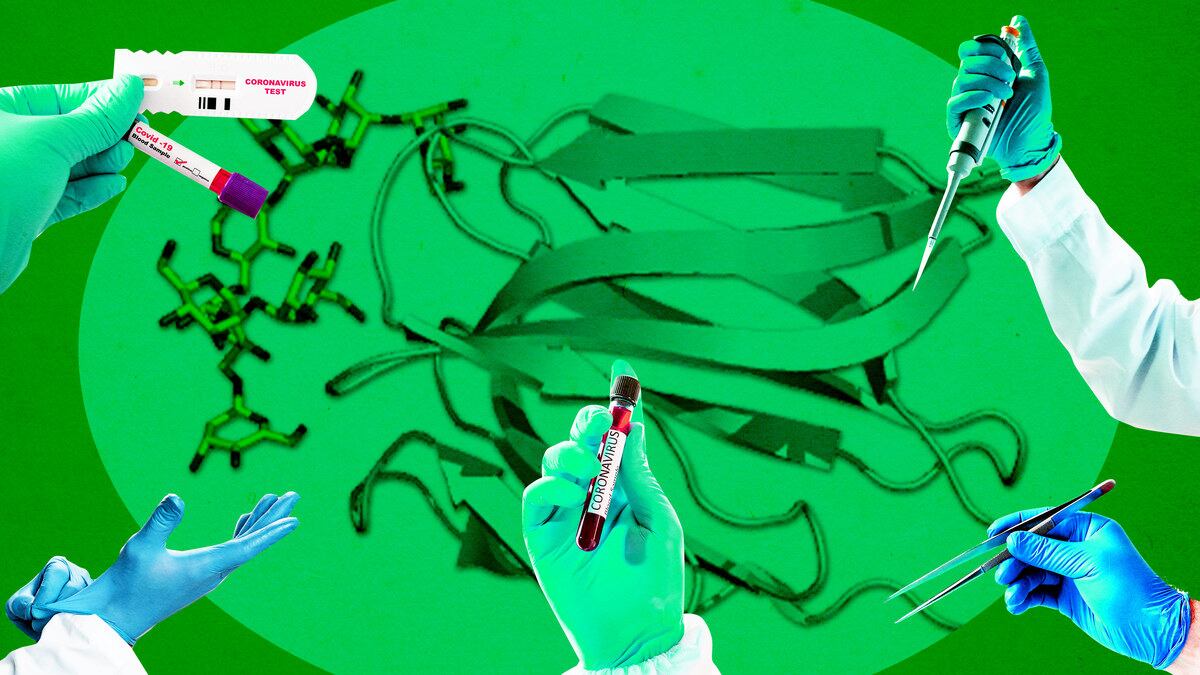Scientists at the University of Pittsburgh and the University of Louisville are working on a nasal spray they say can help to prevent COVID-19 infections. The spray could be beneficial to health-care workers and others who are at high risk of exposure to SARS-CoV-2.
But after months of work, development of the spray is now on hold owing to a lack of money—a common problem among drug-developers as more and more possible coronavirus vaccines and therapies compete for a limited pool of research funding.
Welcome to Rabbit Hole, where we dive deep on the biggest story. It’s for Beast Inside members only. Join up today.
ADVERTISEMENT
The Pitt-Louisville spray delivers a molecule called Q-griffithsin, which is found in nature in a red algae that’s common in New Zealand. Since it’s produced inside a living system, Q-griffithsin is actually a “biologic” and not a man-made “drug,” technically speaking. But most people still use the term “drug” as a catch-all for therapies that come from nature as well as from labs.
Q-griffithsin binds sugars. That property makes it useful as an antiviral, explained Lisa Rohan, whose team at the University of Pittsburgh is working on the spray that would administer a Q-griffithsin-based cocktail. A team led by Kenneth Palmer at Louisville is working on the drug itself.
Palmer said Q-griffithsin would work best to prevent COVID infections. But it might also have applications after an infection, Paul McCray, a University of Iowa pediatric pulmonologist, told The Daily Beast. “If given early enough in the course of infection, it could reduce the infectious virus burden and modify the disease course.”
“I think that small molecules like Remdesivir and antibodies are probably more useful [after infection],” Palmer told The Daily Beast, “but it is possible [Q-griffithsin] could be used as a standalone therapy or combined with Remdesivir or antibodies for treatment.”
Rohan said her and Palmer’s teams were researching Q-griffithsin before the novel coronavirus pandemic took hold in China in December, eventually spreading to the United States in early 2020. After eight months, SARS-CoV-2 has infected no fewer than 15 million people globally and killed around 620,000.
Before COVID, Rohan and Palmer envisioned Q-griffithsin as a therapy for HIV, MERS, and older SARS viruses. They were testing an anally delivered Q-griffithsin drug that they believed might help prevent HIV infections.
That work is ongoing “and getting great results,” Rohan told The Daily Beast. But when they realized how bad the current pandemic might get, Rohan said she and Palmer shifted gears to also work on the spray version of the drug specifically for preventing COVID.
The idea is to spray the drug directly onto the part of the body where the novel coronavirus usually first takes hold. “For respiratory infections, you want to target the primary area of infections,” Rohan said.
When the novel coronavirus touches that thin layer of Q-griffithsin on the throat, the algae molecule could bind up the pathogen’s sugars and inactivate it, preventing the virus from hijacking the body’s cells.
At least, that’s the theory, based on roughly a decade of initial research into Q-griffithsin, as well as on Rohan and Palmer’s early safety trials. The Pitt-Louisville teams possess a prototype version of the COVID-binding spray version of the drug, but they need to conduct large-scale, phase-three trials before they can get approval from the U.S. Food and Drug Administration to sell the drug to the public.
And that costs money—up to $10 million for the whole developmental process, Rohan estimated. She and Palmer are talking with potential financiers, she said. “We’re holding our breath and hoping we’ll get some funds.”
They’re not alone. Hundreds of therapies and vaccine-candidates are in development for preventing and treating COVID-19. Governments and private investors are spending billions of dollars advancing vaccines and therapies—some as a public service, others in the hope of turning a profit.
The U.S. government’s therapy- and vaccine-funding Operation Warp Speed has already disbursed billions of dollars from its initial $13-billion appropriation. On Thursday, the feds announced a $2-billion deal with Pfizer to pay for 100 million doses of a vaccine the company is working on, assuming the vaccine can get FDA approval.
But smaller efforts such as Rohan and Palmer’s sometimes must fight harder to secure much more modest financing. As just one example, Boston-based pharma Constant Therapeutics was, as recently as last month, scrambling to put together funding to adapt TXA127, a stroke therapy, for use in severe COVID cases. The company claimed the drug could help to calm the hyperactive immune-response that has proved so devastating in some COVID patients.






